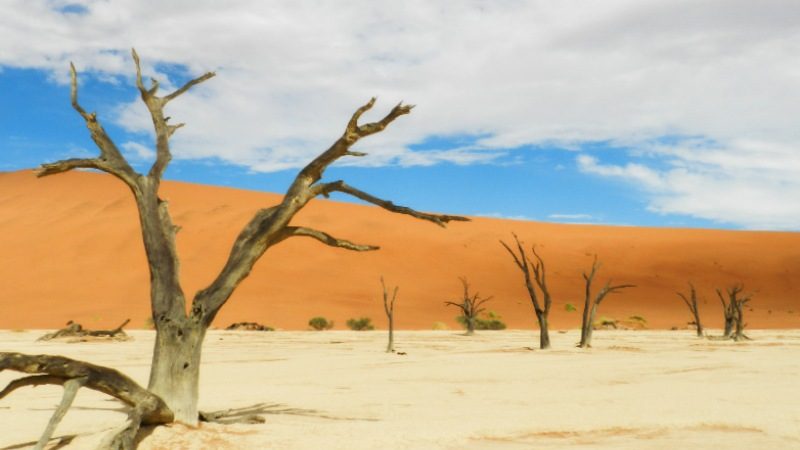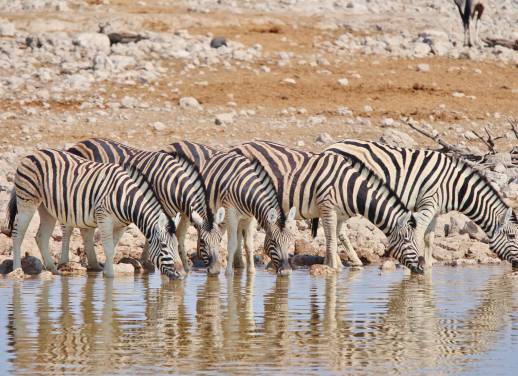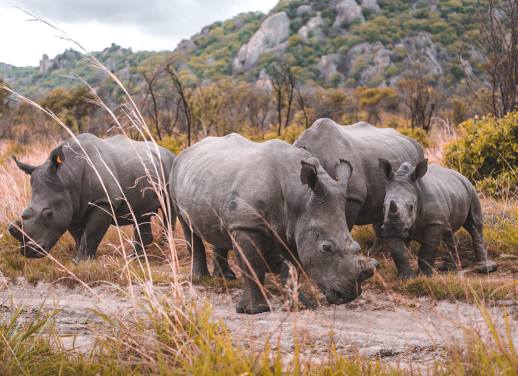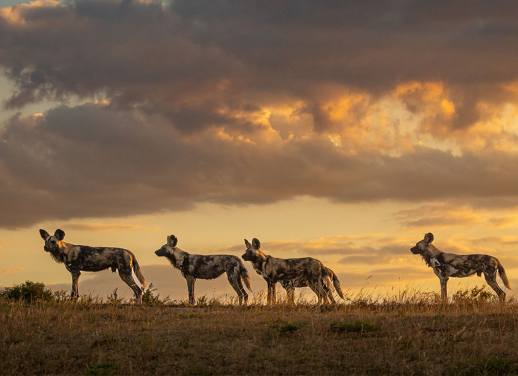An adventure in Namibia, the sparsely populated and exceptionally photogenic country on Africa’s south-west coast, is one of the most incredible travel experiences on earth.
Expect epic landscapes, amazing wildlife, rich culture and welcoming locals, but there are a few other important things about travel in Namibia to keep in mind. Intrepid leader Johannes Lekoloane spills the beans on what to know before you go.
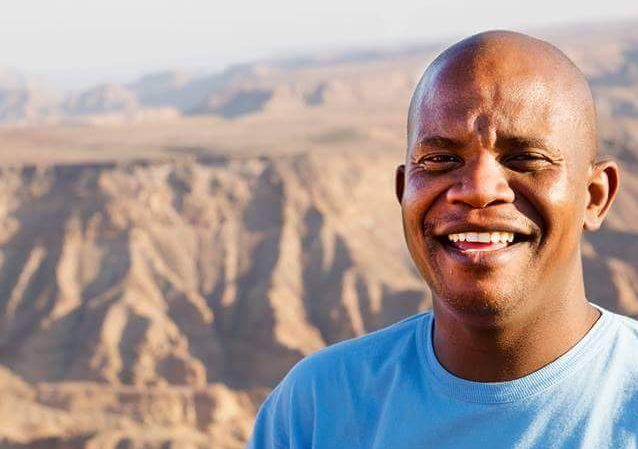
Johannes at Fish River Canyon.
1. You’ll be getting around in an overland truck
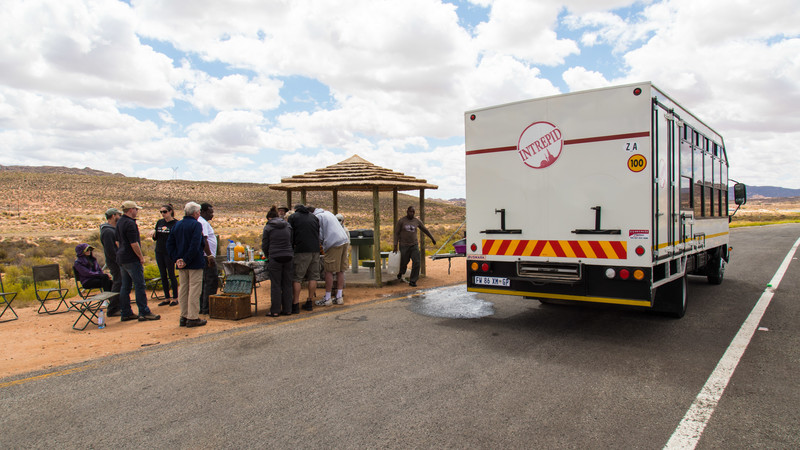
Stopping for lunch, alongside our trusty truck. Photo by Michael Gutierrez.
Not quite a bus, not quite a van, our trucks are custom-built for off-track adventures – and navigating some seriously bumpy roads. You can expect electrical points for charging your gadgets (don’t forget to pack your international power adapter though), and the air conditioning is au naturel, meaning if you get hot, open a window. The trucks are regularly serviced, but we do experience the occasional – err – bump in the road. If your truck breaks down, our leaders and drivers are well trained in getting things fixed (and it’s all part of the adventure).
EXPLORE NAMIBIA ON OUR 13-DAY NAMIBIA DISCOVERY ADVENTURE
2. Expect a few long travel days
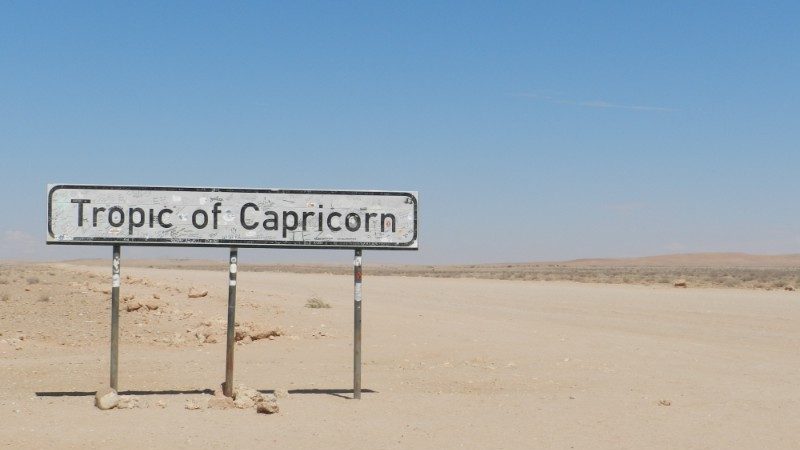
A quick pit stop at the Tropic of Capricorn. Photo by Jenny Gray.
There are road trips, and then there are *road trips*. On an Intrepid adventure through Namibia, expect some long travel days on some pretty poor roads. Most of the roads in Namibia are corrugated, which means you should expect a LOT of bumps. “The roughness of the roads really makes you feel that you’re in Africa!” laughs Johannes when I ask him about the conditions. We suggest bringing a small travel pillow with you to sit on, and load up your phone with podcasts and music to help pass the time.
RELATED: PLANNING YOUR FIRST TRIP TO AFRICA? HERE’S WHY YOU SHOULD START WITH NAMIBIA
3. Pack for all types of weather (and bring a flashlight)
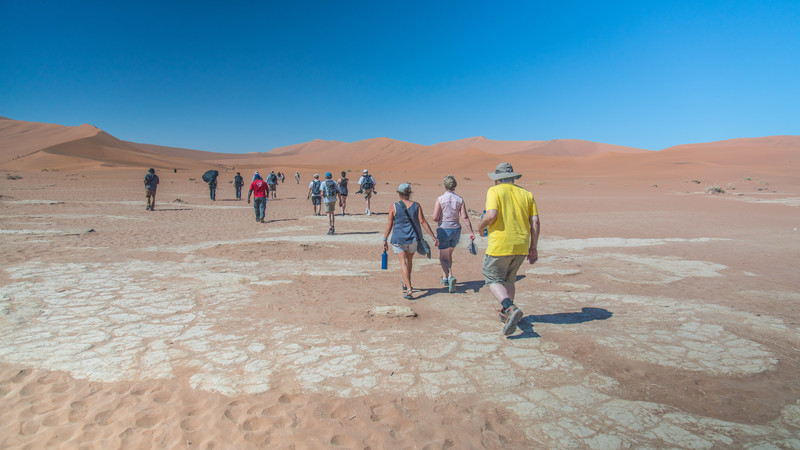
Trekking out to Deadvlei. Photo by Michael Gutierrez.
If you’re travelling in winter, the mornings and evenings can be quite cool, but the days still get hot. Make sure you’ve got a warm jumper/sweater and a beanie for those chillier starts, along with light layers you take off and put on throughout the day. “Don’t forget your torch/flashlight either,” Johannes says, “Many of our lodges are quite remote, and you’ll need a light to find your way at night.”
RELATED: 10 ACCESSORIES YOU’LL BE GLAD YOU PACKED FOR YOUR AFRICA OVERLAND TOUR
4. The landscapes are spectacular, and ever changing
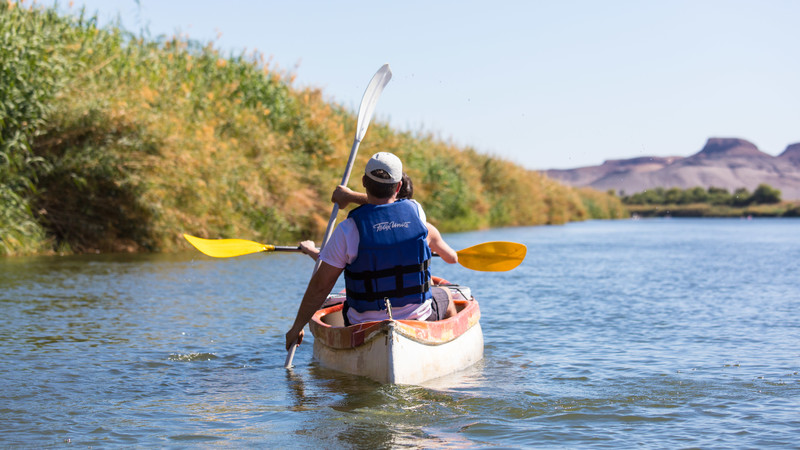
Kayaking in Fish River Canyon. Photo by Michael Gutierrez.
The epic landscapes are one of Namibia’s biggest drawcards: the shifting red dunes of sand in Sossusvlei; skeletal trees a stark contrast against a backdrop of white salt flats and bright blue sky in Deadvlei; a fossilised ‘forest’ in Damaraland; the truly unique sight of the desert meeting the ocean in Swakopmund; watching the sun rise over Fish River Canyon… I could keep going, but you really do need to see it for yourself.
CHECK OUT OUR RANGE OF TRIPS TO NAMIBIA HERE
5. Be prepared to work up a sweat
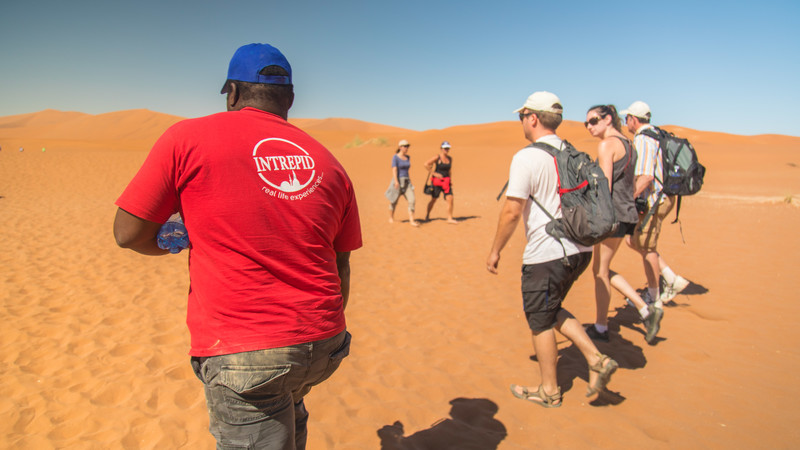
Just a casual stroll across the sand dunes! Photo by Michael Gutierrez.
If you want to really experience Namibia’s incredible sites, you need to put in a bit of legwork – which will mean walking under some fairly intense conditions. Hot sun, sand underfoot, some steep stairs… but it’s all worth it. Climbing Dune 45 – that towering red sand dune you’ve seen peppered through your Instagram feeds – will take around half an hour. We usually tackle this one either first thing in the morning or at the end of the day to avoid the heat, but it’s still pretty tough going. Getting to Deadvlei, the so-called ‘dead marsh’ filled with dried-up trees and not much else, will take around 20 minutes.
RELATED: HOW A DISCARDED BICYCLE CHANGED A COMMUNITY IN NAMIBIA
6. You’ll stay in some out-of-this-world locations
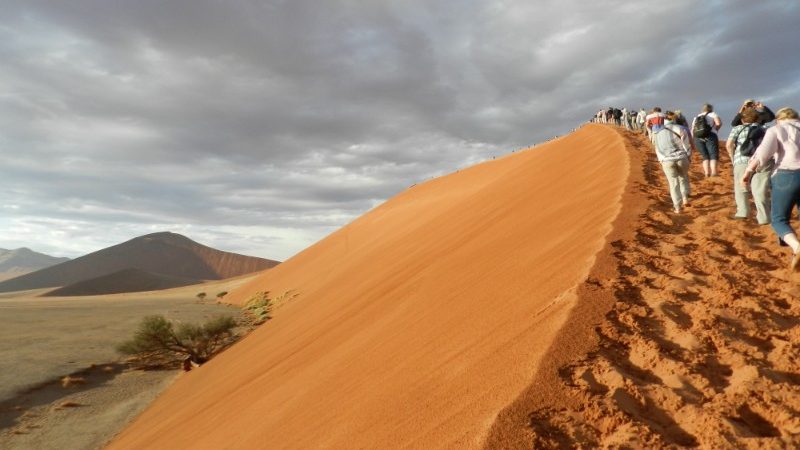
Hiking up Dune 45. Photo by Jenny Gray.
How does bunking down in a bush chalet overlooking a busy waterhole sound? One of our favourite places to stay on our Namibia Discovery tour is the Okaukuejo Camp near Etosha National Park. After sunset, the waterhole is illuminated by floodlights, making it the perfect time to see the abundance of wildlife who stop by for an evening drink, while you enjoy your sundowner. Expect to see lions, elephants and, if you’re lucky, the endangered black rhino. Seeing the wildlife surviving (and thriving) will give you a newfound appreciation of Mother Nature as well. In Swakopmund, you’ll stay in a cosy desert bungalow within easy walking distance of the beach and town.
SUBSCRIBE TO INTREPID’S NEWSLETTER FOR TRAVEL STORIES, COMPETITIONS, GIVEAWAYS & MORE
7. You’ll eat the best apple pie on the planet
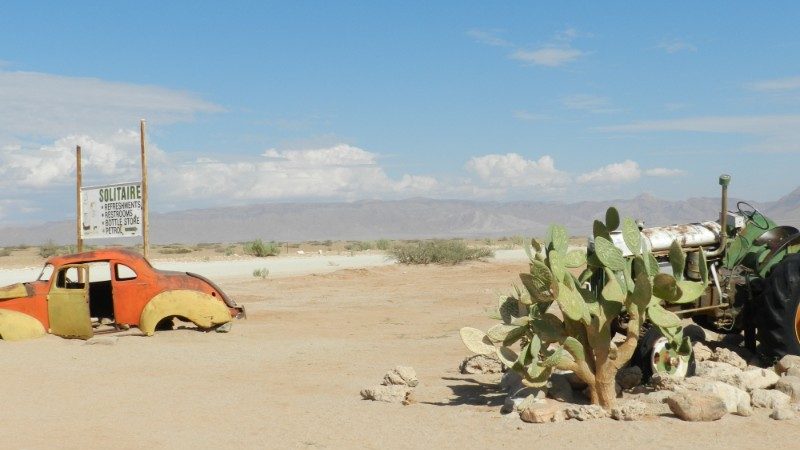
The tiny town of Solitaire. Photo by Jenny Gray.
The tiny town of Solitaire isn’t much of town really. It has no streets, no main road, no houses. Just a selection of rusted out cars, tractors and petrol pumps, cartoon-like cacti, a gas station, a lodge, and Namibia’s most famous bakery. The Moose Macgregor Desert Bakery is renowned for dishing up delicious apple pie and, according to Johannes, no self-respecting sweet tooth can leave Namibia without having a slice. Johannes also recommends Namibia’s locally produced gin, Namgin, and a Windhoek lager.
Ready to roll? Join us on a small group adventure to Namibia now!
Feature photo by Jenny Gray.

